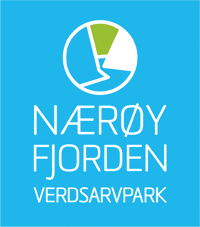Stevy
Styvi er ein av dei fire grendene eller hovudgardane i Nærøyfjorden, og består sjølv av to gardsbruk og vårstølen Holmo. I tillegg har garden stølsrett på Hjølmo og Vassete i Dyrdal, på motsett side av fjorden. Før Nærøyfjordområdet fekk verdsarvstatus, vart det oppretta eit eige landskapsvernområde frå Styvi til Holmo i 1991.
The garden name Styvi
From Oluf Rygh's "Norske Gaardsnavne" we can read that Styvi has been written in many ways throughout the ages: Styffuenn in 1563, Stiffum in 1603, Stiffuenn in 1611, Stiffue in 1667 and Stive in 1723. This is how Rygh interpreted the name to be composed of stúfr- (=stump) and -vin (=grassland), which means "Stubbe af et Wood". Other names researchers believe that the name reflects the topography of the farm, with the narrow, long fields.
Prehistoric times on the farm
In the museum on the farm there are prehistoric axes, both one in stone and one in iron. Otherwise, there is one fixed ancient monument that testifies to prehistoric times on the farm. This is a large burial mound of 15 meters across, 1.5-2 meters high, and a large pit in the middle that comes from digging. A legend says that the wealth on the farm Tufto comes from this pile, although this does not seem particularly likely. Røysa is very exposed with a good view over the fjord on the flat promontory at Holmo. This location can testify to a desire for control over the fjord bed, and is characteristic of mounds built in the Bronze Age (1800-500 BC). As some lumps of rust are the only thing that has been preserved from the excavation, we cannot be sure of the dating of the cairn, but it nevertheless testifies to habitation somewhere in the vicinity in the Bronze or Iron Age.
From one to two uses
There is reason to believe that Styvi was inhabited before the Black Death, and that the farm was cleared by people from Dyrdal. This may explain why Styvi has the right of way on the Dyrdal side of the fjord. After the plague, the garden was cleared again in the years 1530-40. From this time until the 18th century, the farm was more and more cultivated and with this got a higher amount of land, a measure of the size of the farm. In 1763, the farm was divided into two uses, probably because the conditions on the farm were so good that it could support two families.
The postal farmers
Då postvesenet i Noreg var skipa på 1660-talet, vart det oppretta postrute mellom Bergen og Oslo, omlag på same ruta som stamvegen går i dag, med unntak av tunnelane mellom Gudvangen og Lærdal. I dei delar av året då fjorden var isfri, gjekk posten med båt mellom Lærdal og Gudvangen. Dersom isen la seg gjekk derimot ruta langs vegen frå Gudvangen til Bakka, over isen frå Bakka til Bleiklindi og derfrå langs postvegen til Styvi. Frå denne tida er det bevart ein spesiallaga farkost, ein blanding av ein båt og ein slede, som i dag er utstilt på Styvi gardsmuseum. Den 5,5 km lange vegen blei på den måten ein sentral del av postvegen mellom Bergen og Oslo, og er framleis bevart i form av ein gang- og kløvjeveg. Vegen er no restaurert og er blitt ei populær turrute.
Landscape conservation area
On 18 October 1991, the Directorate for Nature Management established the Styvi-Holmo landscape conservation area, based on the distinctive and well-preserved cultural landscape, the vegetation and the old post road. The area around Holmo is considered to be of particularly great value, with leafy meadows, Styving trees and a sheltered environment with buildings. Postvegen is also an important element in the landscape conservation area. It follows the shoreline along the fjord and is built using stone walls and bolts. The walls stand up well from the sea, but are constantly threatened by washout due to the waves from the large boats in the fjord. This leads to an annual need for maintenance. In order to reduce the risk of washing away walls and beaches in general, an upper speed limit has been set on the fjord. Within the conservation area is also the Nisedalselvi, which is protected against power development.
The Garden Museum
For Botolv and Kjellaug Hov, who owned and would continue to run the farm, the protection of the area was a source of great frustration. At the same time as the conservancy imposed major restrictions on use, there were no arrangements for compensation for loss of income. Fortunately, they did not give up.
After the creation of the landscape conservation area, the use of the post road as a hiking route increased sharply, while more tourists continued to visit Styvi. In 1993, the farm folk opened their own farm museum and café. In the cafe, the visitors are served the waffles of Kjellaug Hov in turn. The museum contains a large collection of travel items and objects that tell about life on the farm in older times. Botolv Hov himself masters old crafts such as spinning rope from linden bast, production of horn spoons and forging bells for livestock. He is very passionate about carrying on these old craft traditions.
